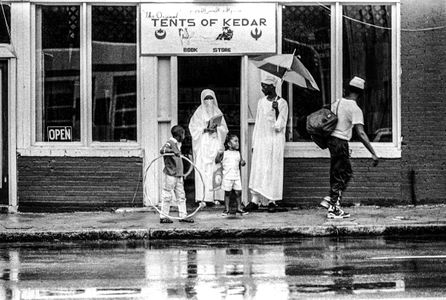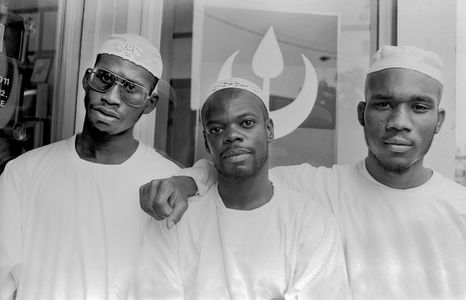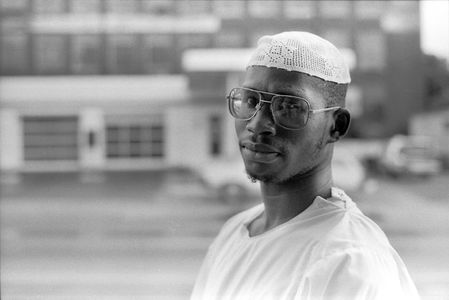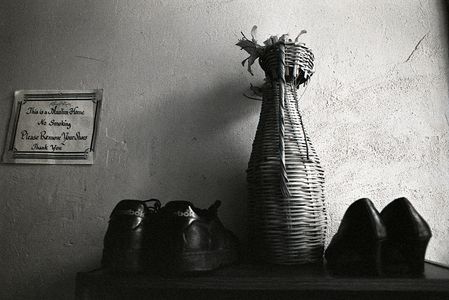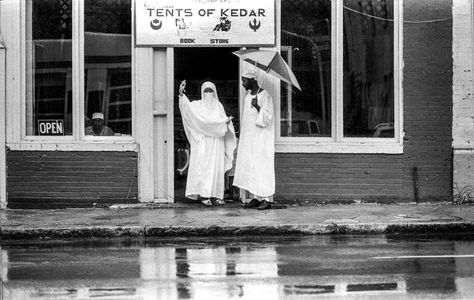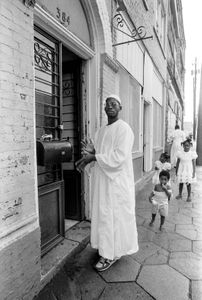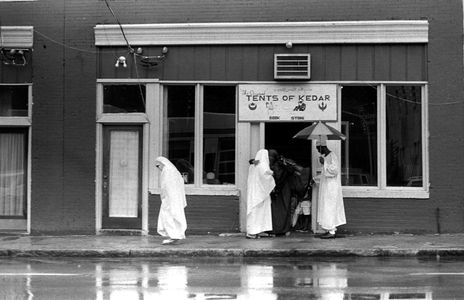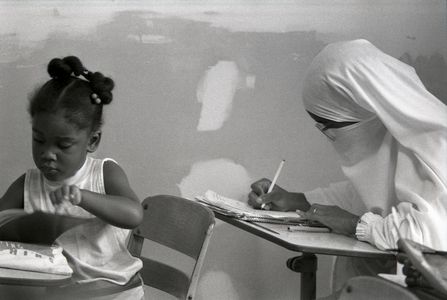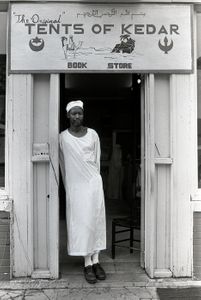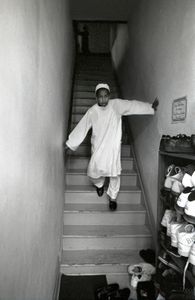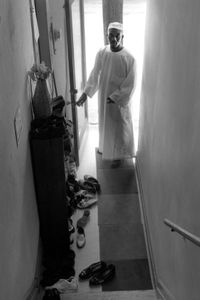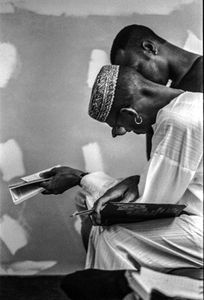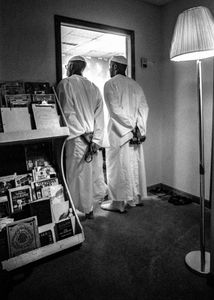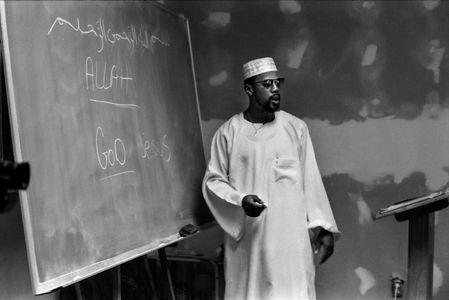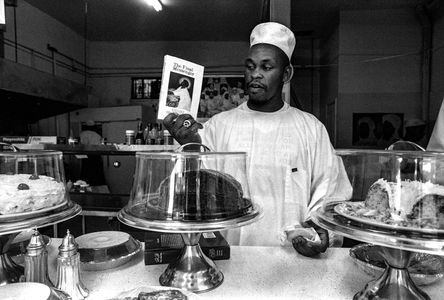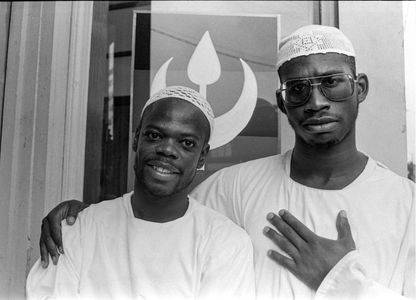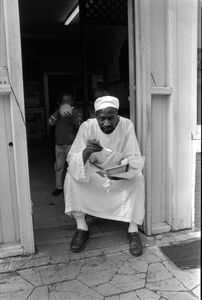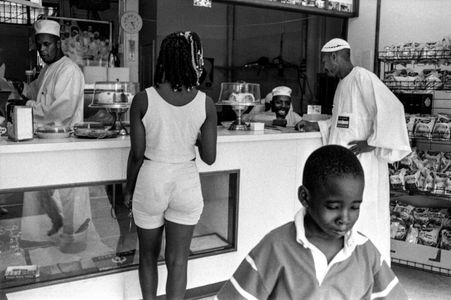Storefront Churches, 1990-1993
Growing up, my knowledge of religions was pretty much limited to the large traditional sects such as Catholic, Baptist, Presbyterian, Judaist, etc., yet later I found myself attracted, by chance, to the well of faith demonstrated by small congregations of believers who followed their own paths to faith and redemption.
In the late 1980s and early 1990s the Sweet Auburn, Dekalb Ave, and Poncey Highlands areas of Atlanta were vastly different places than today’s gentrified pricey, high-rise neighborhoods. Back then these were older, predominately Black neighborhoods. As I drove through these neighborhoods on my way to graduate school, I began to notice people in crisp white robes or dressed in their finest coming and going from small churches, houses and buildings. Four of these churches piqued my curiosity so I mustered my courage and knocked on their doors. Each of these churches was unique as a result of its origins, its founders, and its followers, and each of these small churches allowed me to capture their “moments in time” each in their own way.
Brotherhood of the Cross and Star
The first church I approached was the Brotherhood of the Cross and Star. It was in an old duplex on Cleburne Terrace in what is now known as the Poncey Highland area of Atlanta. The rector and his family lived in one side and the "church” was on the other side. They were welcoming and happy to have me attend their services.
The members of the church were Nigerian immigrants who, for church services, transformed from taxi drivers, house cleaners, and laborers into regal, faithful believers. The “Brotherhood” was founded in 1956 in Calabar, Cross River State, Nigeria, by leader Olumba Olumba Obu who was considered to be the Holy Spirit personified. Their Christian beliefs incorporate some African traditional beliefs along with the belief that God is biospiritually interconnected with all things in nature, is male and female, and good and evil. Their central belief is: “Love towards other men.” Brotherhood services were long, 3 to 4 hours including singing and dancing. These lovely people had a very strong Christian-based faith and their children were respectful and part of the service. After the service the women would make a lunch filled with good food and plenty of it served on their porch.
A few years after my visits, the duplex burned to the ground and they were forced to relocate to South Atlanta.
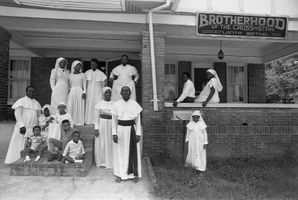
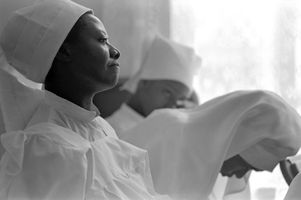
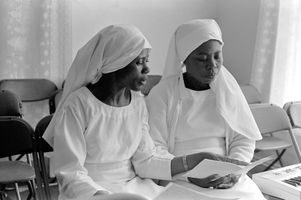
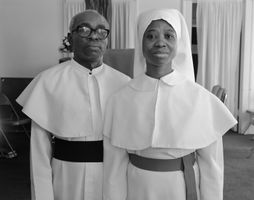
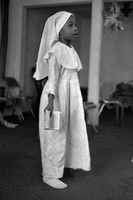
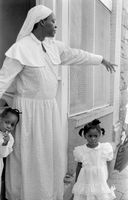
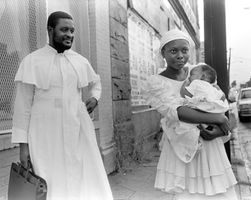
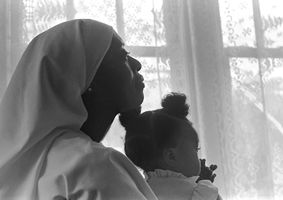
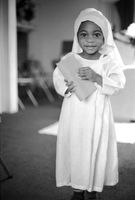
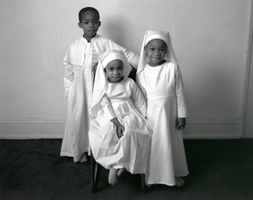
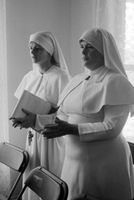
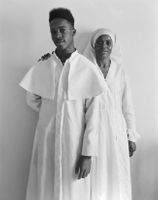
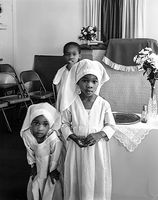
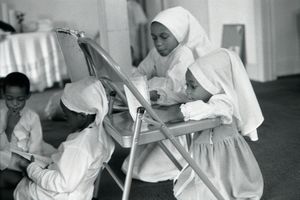
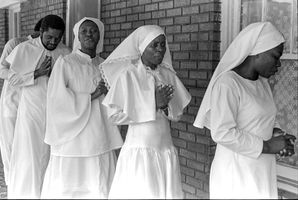
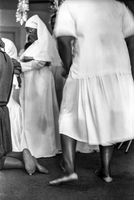
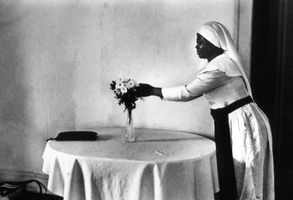
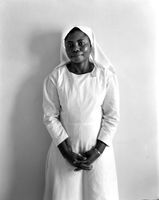
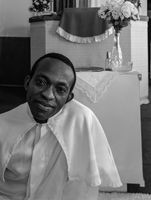
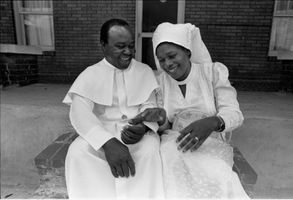
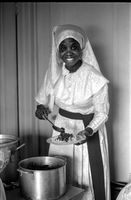
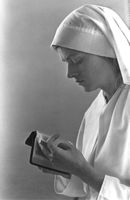
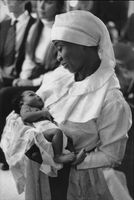
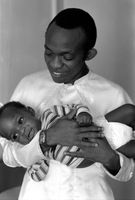
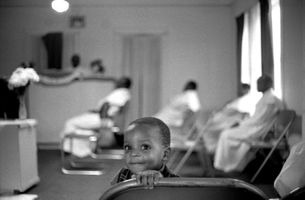
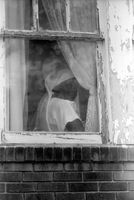
The Church of the Perfect Gospel
The second storefront church I visited was The Church of the Perfect Gospel located in a nondescript, small building at 556 Decatur St, Atlanta. The door was closed and I could not see inside. It was Sunday morning and I could hear people inside so I softly knocked on the door. A lovely woman named “Sister Rene” opened the door, gave me a big smile and invited me in for Sunday service. I sat down in the back of the room and began to get my bearings. There were about 20 people in attendance that morning, many of whom, I later learned, were relatives by birth and/or marriage. The service reflected that these were loving and kind people who believed and adhered to the words in the Bible.
Matthew 5:48 “Be ye therefore perfect, even as your Father which is in heaven is perfect.”
At the end of the service, the rector, Evangelist Frank Housworth asked me to introduce myself. I explained the documentary I was creating on storefront churches and the grant I received from Atlanta’s (first black Mayor) Maynard Jackson’s Bureau of Cultural Affairs to fund the project. They were happy to let me add their church to the documentary. I began photographing the next Sunday. Their ministry started in 1989 at the Decatur address but after numerous break ins and the onward march of area gentrification, Evangelist Frank Houseworth and his wife Sister Rene relocated into the Daniel Chapel Annex of the Grace World Outreach Church in Forest Park, GA. where they continue their Bible study. They have expanded their out reach through radio broadcasts on WAEC 860 AM and assist other churches in spreading the Word.
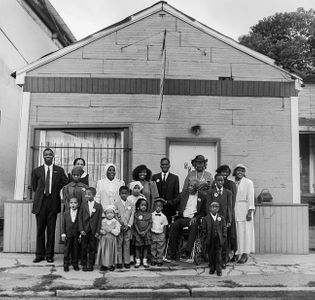
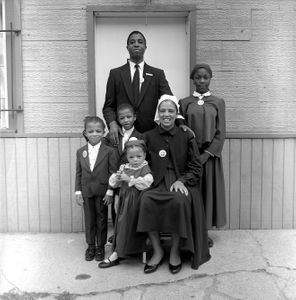
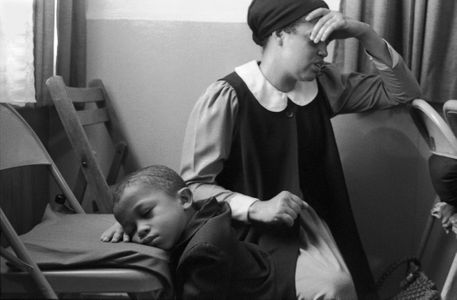
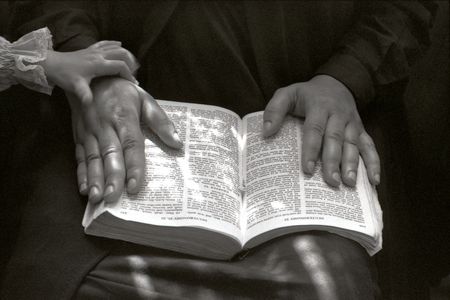
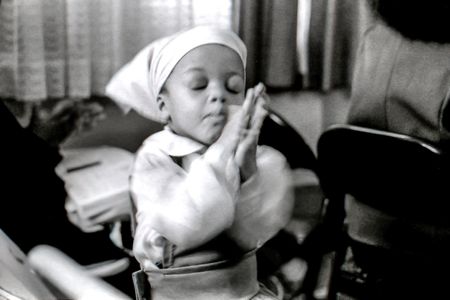
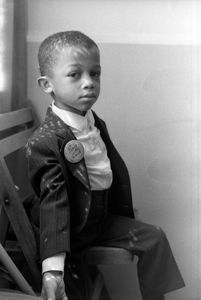
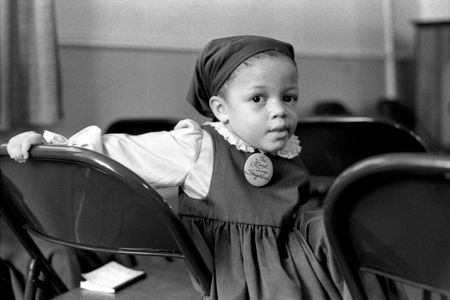
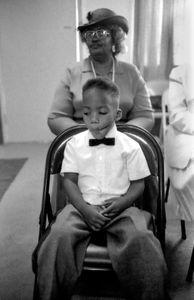
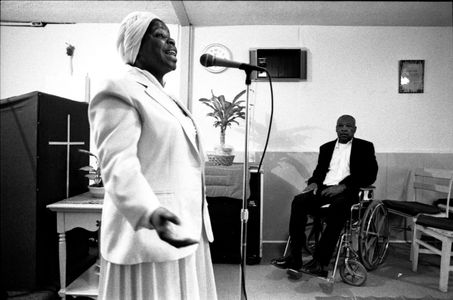
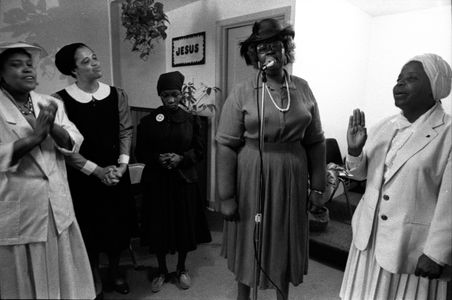
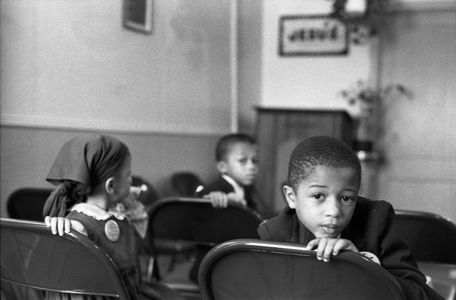
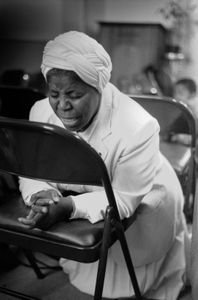
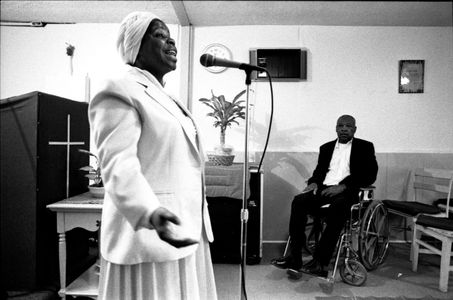
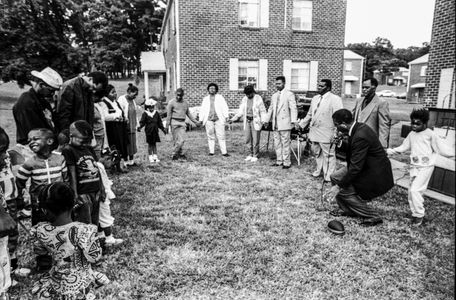
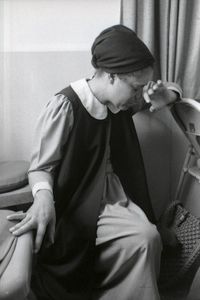
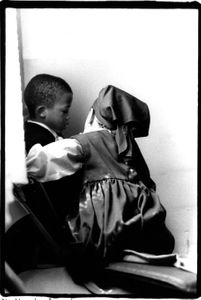
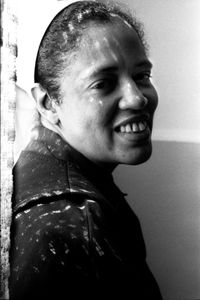
The New Macedonia Church of God in Christ
The Church was located in a brick building on Edgewood Avenue near Inman Park. Elder Frederick Kelley, Pastor organized the church in 1985 at that location. Because these parishioners were American Pentecostal, they displayed an intense and experiential approach to their faith. The services included lots of Christian music and chants expressing their faith through praise, penitence, and lament. I was not familiar with being “slain in the spirit” which describes a form of prostration in which an individual falls to the floor while experiencing ecstasy. Believers attribute these behaviors to the power of the Holy Spirit. As a result, my photo shoots were intense and emotional, requiring me to be “present" and “invisible” at the same time.
As the 1990s gentrification of the Inman Park area of Atlanta approached, Pastor Frederick Kelley and his wife Mother Ann Kelley relocated the church to Decatur where it resides today.
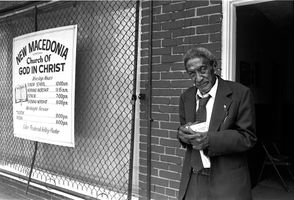
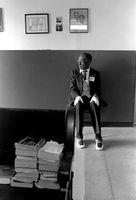
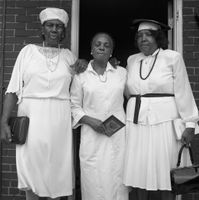
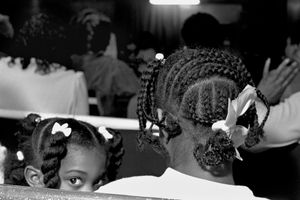
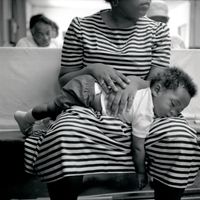
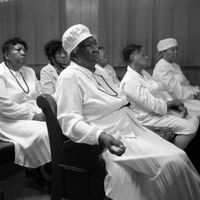
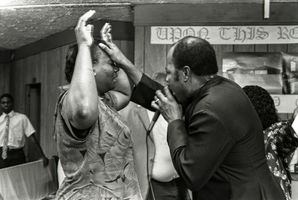
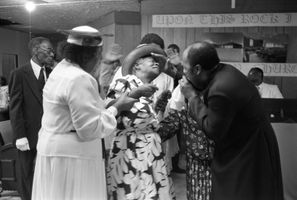
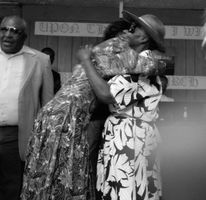
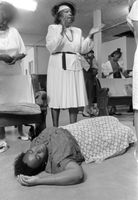
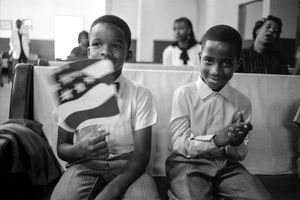
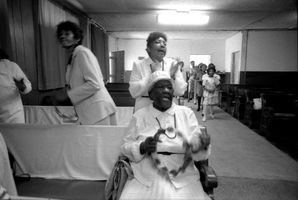
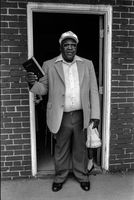
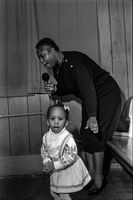
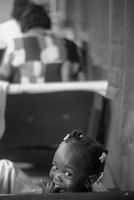
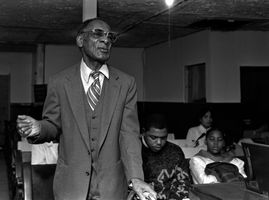
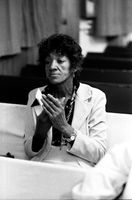
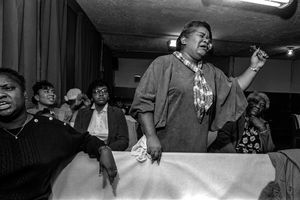
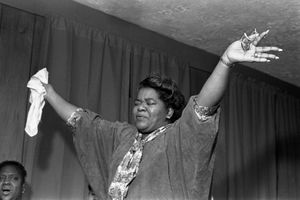
Tents of Kedar
The last, and certainly the most restrictive, storefront church I visited was the Nubian Islamic’s Tents of Kedar located in a four story building at 323 Edgewood Ave near Boulevard St. They considered themselves to be separatists and defined themselves as Hebrew and true descendants of Abraham and Moses. They followed the dictates of the Torah and identified as “Nubian” rather than African American or Black.
They considered themselves to be nonviolent, peaceful, and law abiding, but fanatical about their beliefs. One of their beliefs defines white people as “devils”. Another was that women were not allowed in their “sacred” places of worship. Needless to say, my being white and a woman meant they were not welcoming me in with open arms. After much discussion along with showing them the letters I received from Atlanta Mayor Maynard Jackson and Georgia Governor Zell Miller regarding the grants I had received for this documentary, and handing over my driver’s license for them to hold, they then allowed me into only certain parts of the building. I was not permitted in the “sacred” areas or the residences. I was the first white woman ever allowed inside.
The Nubians lived and worshiped in that four story building for at least 3 years. I was told they then moved to Florida. As of this writing I have been unable to locate them. The Edgewood Ave building still exists. It was refurbished and is now a live/work apartment building.
